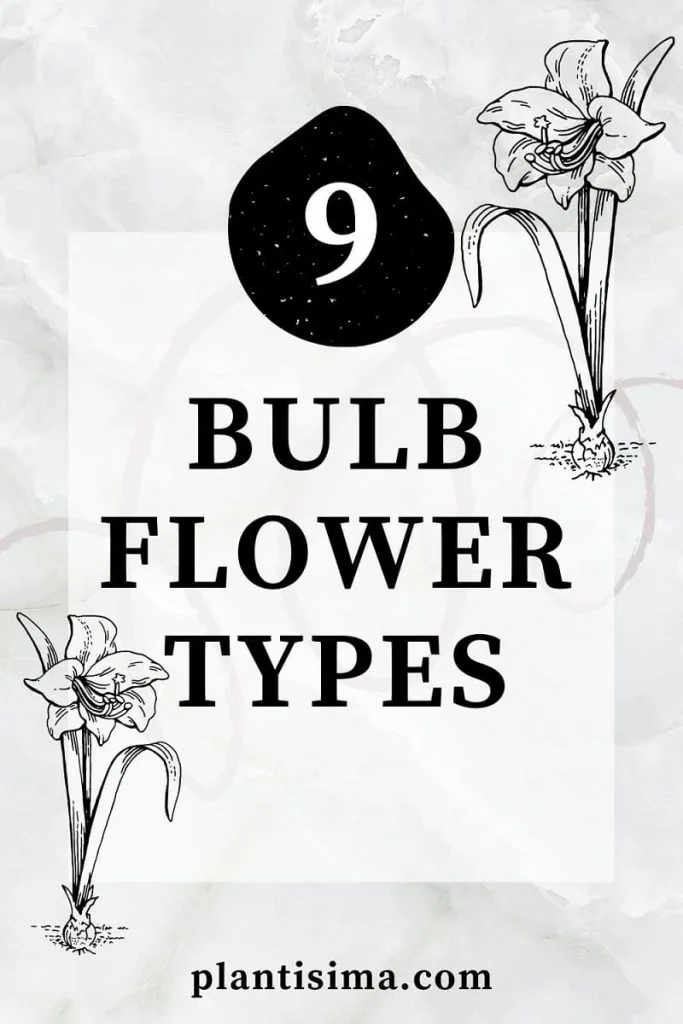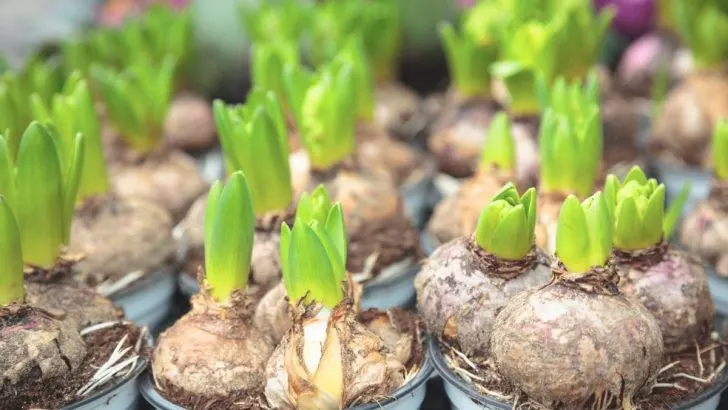Believe it or not, many people do not know what bulb flower types actually are and therefore avoid them before they find out.
In order to break the prejudices against these flowers today, we will talk about what bulb flowers are, how to plant them, and the difference and we will mention 9 of the most beautiful types of these flowers.
If we have interested you, stay with us because below we bring you literally everything about bulb flower types. What makes these flower special? Let’s learn it.
Did you make yourself a coffee? Great, let’s get started then.
What Are Flower Bulbs?

Bulbs are flowers or plants from the tulip, hyacinth, narcissus, iris, and daylily families. They are called bulbs because their roots resemble an onion, ie a bulb. They have underground storage structures (tuberous roots).
Although they produce beautiful flowers in a variety of colors, their roots often look like vegetable roots. However, people plant them as ornamental plants since their flowers are breathtaking.
Bulbs are flowers that herald spring and are known for their beautiful shoots and multi-colored petals. Just because bulbs are usually spring or summer plants, they are bothered by the cold. Plant bulbs are usually a spring perennial plant.
These plants are now from March to May. order to talk about the most beautiful types of bulbs, stay with us because below we bring you 9 wonderful types of bulbous flowering plants. Are you ready for some newly planted bulbs then? Let’s plant a bulb then!
What Kind Of Flowers Grow From Bulbs?
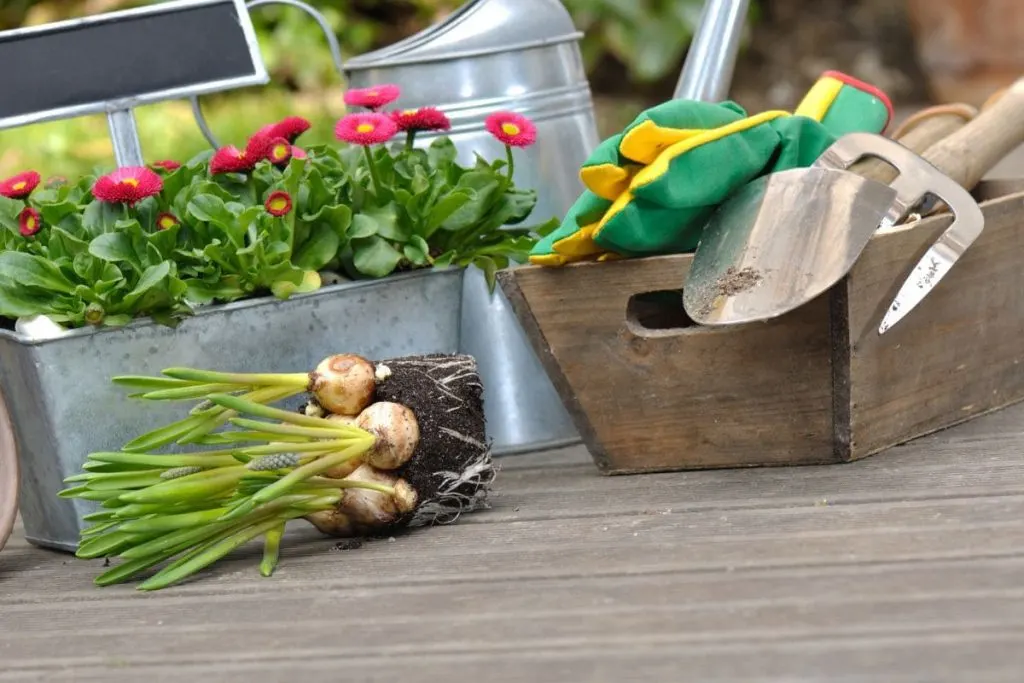
A flower bulb, even one that comes from hardy bulbs is a regular garden flower. If you want to plant bulb in your yard, remember that these are gladiolus plants with delicate flowers.
However, in the late spring or early summer, tender bulbs, and underground bulb will give you amazing flowers that will be the highlight of your garden.
With their underground storage structure, if you plant tulips, for example, they will survive the winter and might be ready for the next spring as well.
What Are The Two Types Of Bulb Flowers?
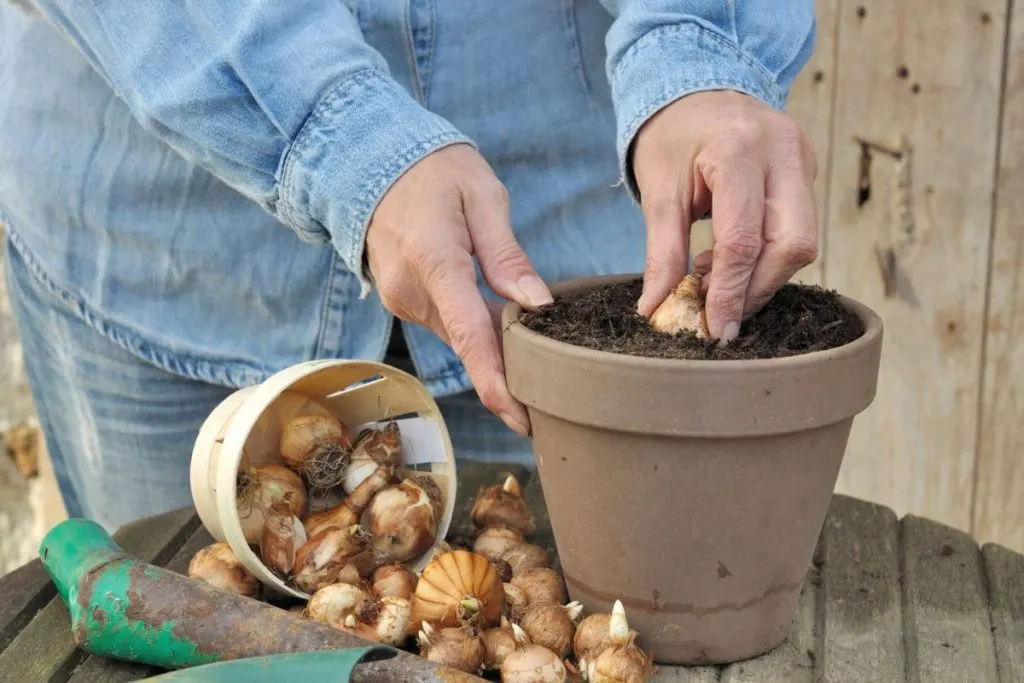
The difference between the types of bulbs is in their method of planting, durability, and of course the appearance of the bulb.
In order to know which group your plant belongs to and how to plant it properly, let’s find out a little more about the two basic groups of plant bulbs.
– True/Tunicate Bulbs
True bulbs are plants that have several layers of so-called husks. Their shells are in an embryonic state and the onion belongs to this type. In these layers, there is food for the plant, ie stored food for the plant. They have a basal plate.
These people also protect the plant from external influences. Tulips are a good example of a true bulb. They are usually planted in the early spring and they’re different in the planting depth from imbricate bulbs.
You should usually plant them around 6 inches deep with a light layer of soil above them. Sometimes, people plant them right under the soil surface.
– Imbricate Bulbs
Imbricate bulbs are a “drier” type of bulb. Lilies belong to this type of bulb. They don’t have scales that protect them from external influences, so they must always be moist so they don’t dry out.
They don’t have much food supply as the true bulbs and don’t stand cold temperatures as well as the true bulbs.
Drying does not help this bulb at all. They are best in moisture outdoor gardens. But some of these species are also used as cut flowers that belong to the true bulbs group.
Plant imbricate bulbs around 9 inches deep, in most cases in a loamy soil. Planting time for imbricating bulbs is late spring.
9 Spring Flowering Bulbs – Common Spring Bulbs
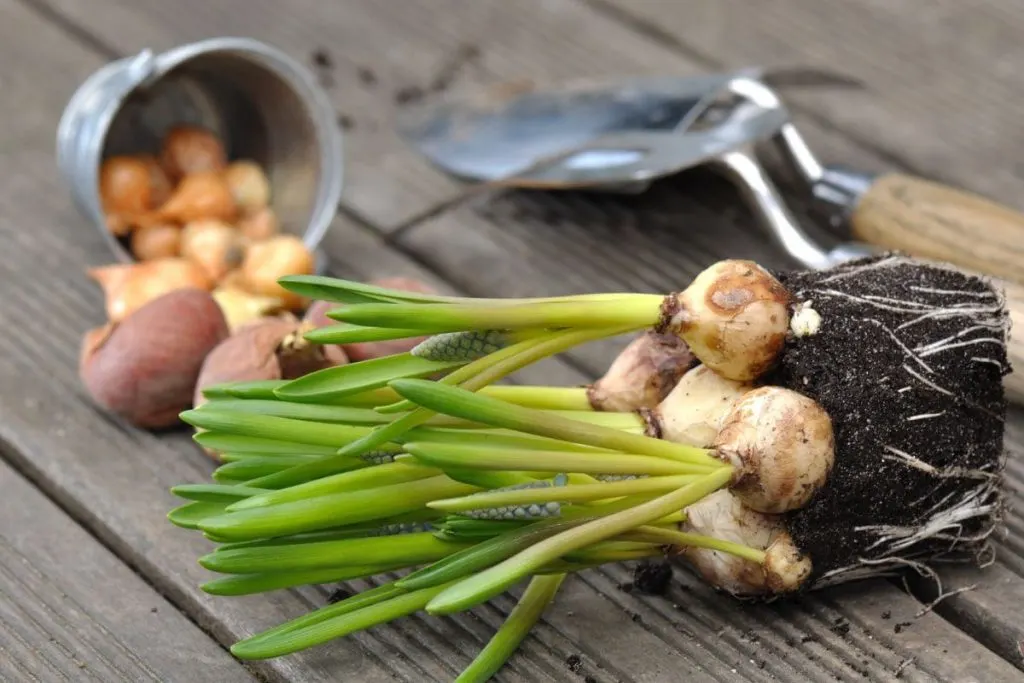
Below we bring you 9 of the most beautiful types of bulb flower types. If until now you had doubts about these flowers, precisely because of their roots, i.e. bulbs, we are here to dispel your doubts. Learn more about them, and then decide if there is a place for these plants in your garden.
1. Scilla
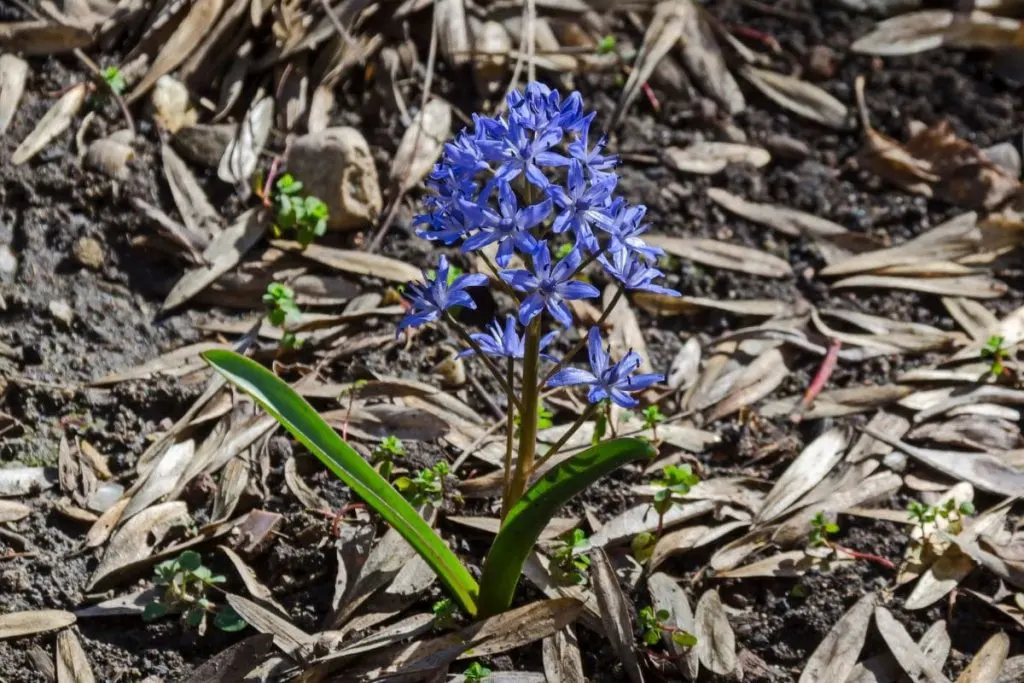
Squills, Bluebells, or Scilla flower varieties in color. Scilla flowers are usually found in blue, white, or pink colors. They are wildflowers, and perennials as well. The genus has around 80 species.
They belong to herbaceous plants. Scilla usually grows up to 2 feet tall. Aztecs grew it as a food crop. They belong to the imbricate bulbs group.
- Botanic name: Scilla
- Family: Asparagaceae
- Subfamily: Scilloideae
- Flower color: pink, white, purple, blue
- Flower shape: bell-shaped
- Leaf shape: lance-shaped
- Sun conditions: various light conditions
- Soil type: loamy soil, perlite, peat moss
- Fertilizer: high-phosphorus fertilizer, granular fertilizer
- Native habitat: Europe, Africa, the Middle East
2. Tulips
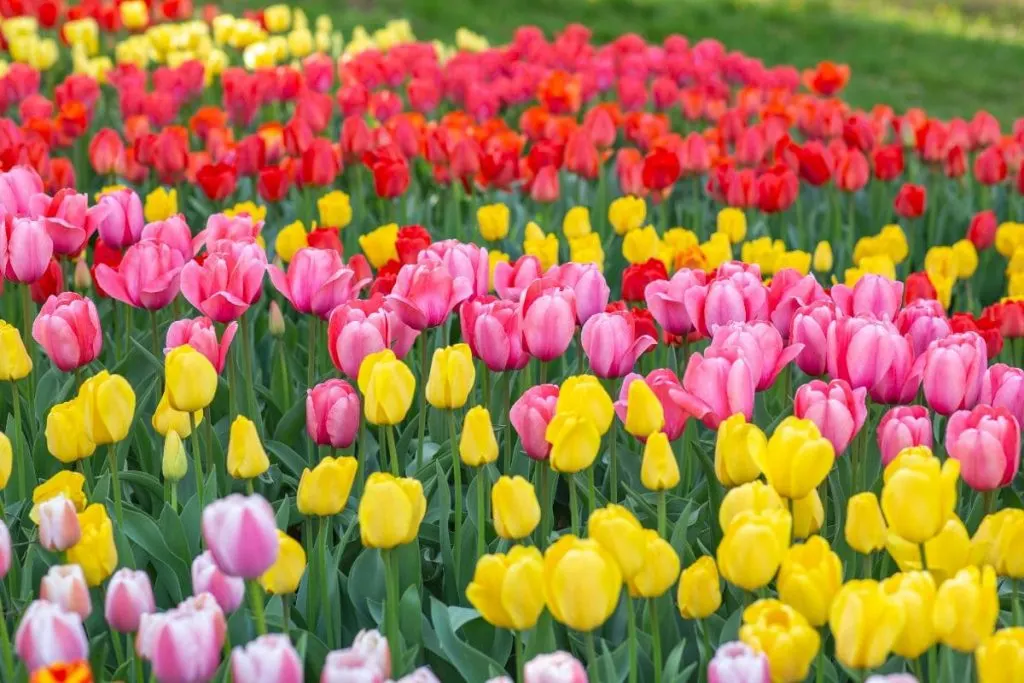
Tulip is not the imbricate bulb, they are the perfect example of a true bulb flower. From last year’s growth, you can get new growth next spring if you take care of its bulbs during the winter properly.
You will see them in formal gardens, home gardens, tropical Africa, and southern Europe. They are popular in the Mediterranean region as well. Due to their beauty, they are the national flower of Netherlands.
- Botanic name: Tulipa
- Family: Tulipacaeae
- Subfamily: Liliaceae
- Flower color: pink, red, yellow, white
- Flower shape: funnel-shaped flowers
- Leaf shape: almost rectangular
- Sun conditions: bright indirect light
- Soil type: sandy soil
- Fertilizer: 10-10-10 or 10-15-10
- Native habitat: South and Central Asia
3. Narcissus Plants
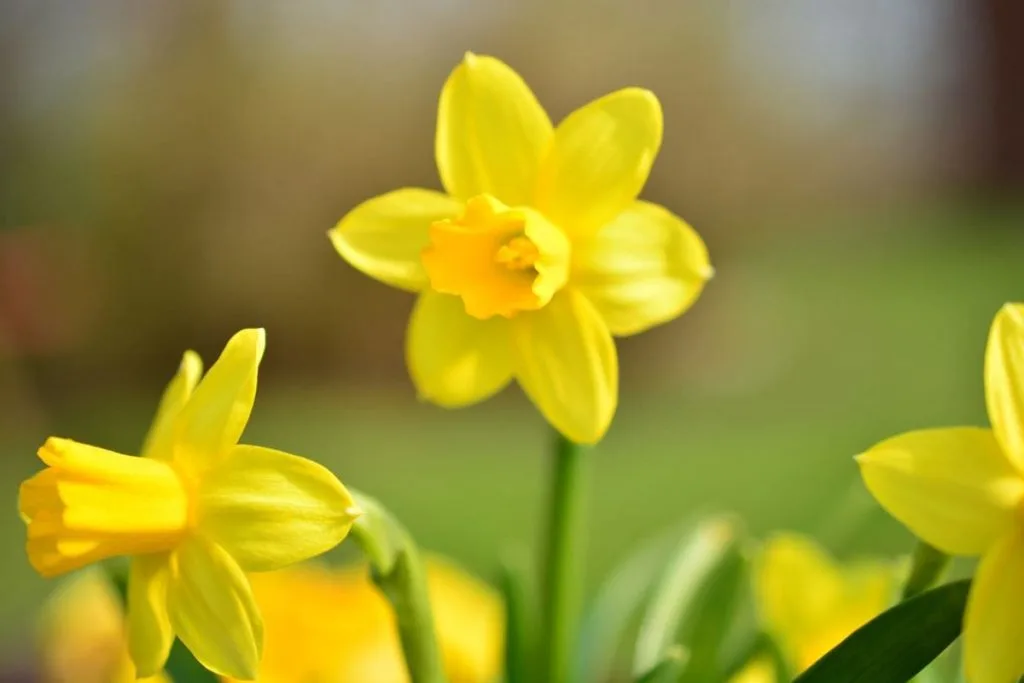
The plant originates from a narcissus genus with many hybrids. They are typical for Southern Europe and the western Mediterranean. Brightly colored, with one flower only on its stem, it is one of the most beautiful bulb flower types.
In their full bloom, they will take your breath away. New plants can be grown from last season’s plants, only if you take care of their wintering time correctly and step by step. They are true bulbs since they have fleshy scales typical for true bulbs.
- Botanic name: Daffodil
- Family: Amaryllis family
- Subfamily: Amaryllidoideae
- Flower color: white and yellow
- Flower shape: trumpet-shaped
- Leaf shape: linear
- Sun conditions: morning sun, bright light in the afternoon
- Soil type: loamy soil, fertile, well-draining soil
- Fertilizer: organic material
- Native habitat: Europe, North Africa
4. Tuberous Begonia
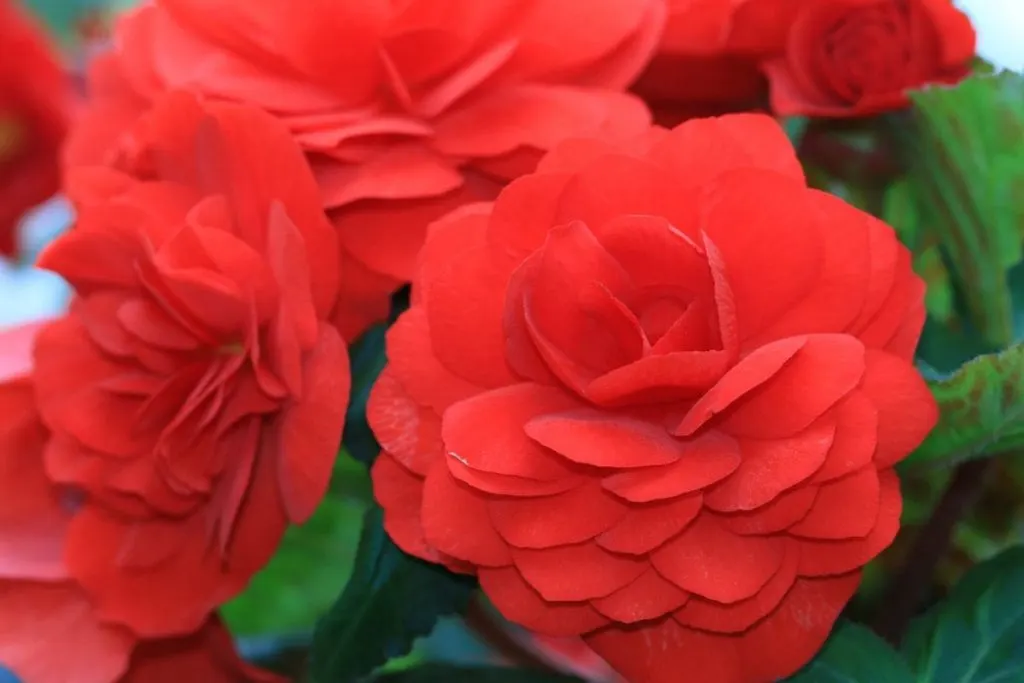
Tuberous Begonia is known for its tuberous root just like the dahlia tubers plant. They could be stored in a mesh bag before planting in the early spring. Many species with tuberous roots are stored this way.
They can grow up to 18 inches tall (maximum height). They are well known for their hybrid species as well. Tuberous begonia has complex parentage. They are usually planted in wire cages. They belong to imbricate bulbs. Another begonia type-begonia white also has some sort of a bulb around its roots. Begonia maculata on the other hand has regular roots.
- Botanic name: Begonia X tuberhybrida
- Family: Amaryllidaceae
- Subfamily: Asparagales
- Flower color: red, yellow, white, salmon, pink, orange
- Flower shape: camellia-like
- Leaf shape: large-round leaves
- Sun conditions: shade and bright light
- Soil type: leaf mold, coarse sand
- Fertilizer: organic matter, hummus
- Native habitat: tropical South America, South Africa
5. Calla Lily

Calla lily is a bigger type of bulb flower type. they can grow up to 2 feet tall, even better if they’re grown outdoors or in a greenhouse.
They grow well in baskets and pots but with a note to put a chicken wire around it to protect it from pests. Due to their outer skin, these flowers are not true bulbs nor true lily flowers. Lilies are also one of the flowers that mean friendship.
- Botanic name: Zantedeschia
- Family: Araceae
- Subfamily: Aroideae
- Flower color: white, yellow, orange, pink, red, lavender
- Flower shape: funnel shaped-flowers
- Leaf shape: arrow-shaped
- Sun conditions: direct sunlight, bright light
- Soil type: loamy, perlite, peat moss
- Fertilizer: well-rotted compost, bone meal
- Native habitat: South Africa
6. Sword Lilies

Sword lilies can grow up to 6 feet tall in their native habitat. They usually bloom in the midsummer or early fall time. They are not true bulbs, they belong to the imbricate bulbs group. It’s one of the many plants from this group that doesn’t like the sun much.
They are not interesting because of their bulbs only, but because of the other types of lilies and their meanings as well. If you have lilies at home but wondering what to do when lilies have finished flowering, make sure you check that as well.
- Botanic name: Gladiolus palustris
- Family: Iridaceae
- Subfamily: Iridaceae
- Flower color: pale pink
- Flower shape: funnel-shaped flowers
- Leaf shape: long sword-shaped leaves
- Sun conditions: bright indirect light with partial shade
- Soil type: rich-well-draining soil
- Fertilizer: 10-10-10 fertilizer
- Native habitat: Africa, Europe
7. Muscari
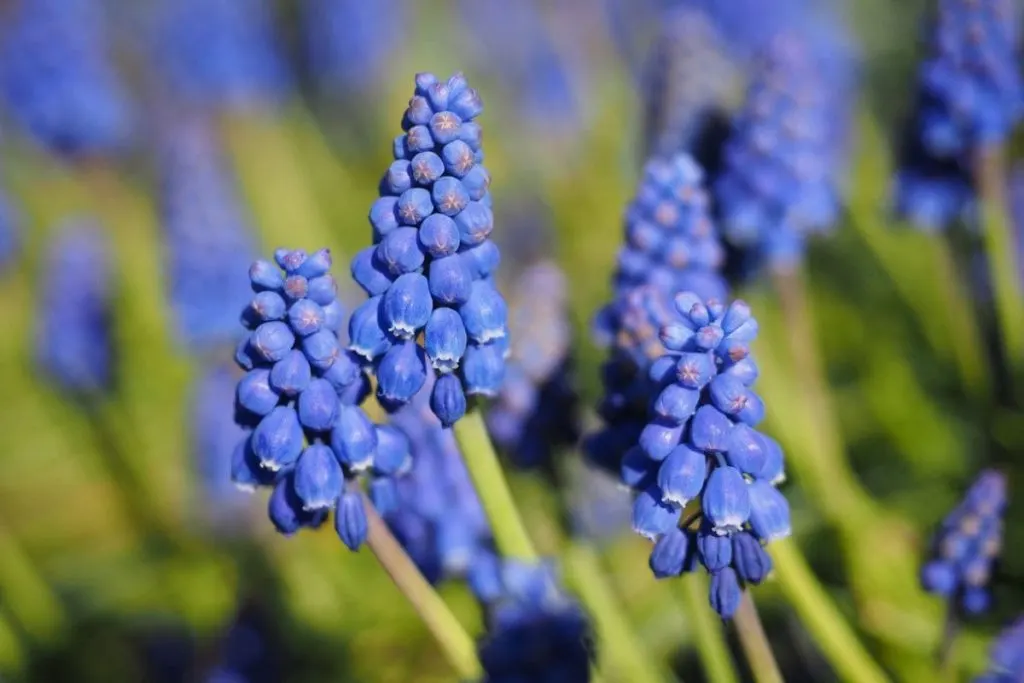
Muscari plants conquer gardens and the hearts of gardeners. They belong to persistent bulbs that reproduce quickly if the habitat suits them.
They are best suited to the edges of lawns, home yards with lots of sun, and as the bases of ornamental shrubs and trees.
In addition to blue flowers with various shades, there are varieties of Muscari with white flowers. The main flowering phase begins in March and April.
- Botanic name: Muscari armeniacum
- Family: Liliaceae
- Subfamily: Scilloideae
- Flower color: blue, white
- Flower shape: bell-shaped
- Leaf shape: linear
- Sun conditions: sun to full shade
- Soil type: average garden soil
- Fertilizer: granular 5-10-5 fertilizer
- Native habitat: Eurasia
8. Allium
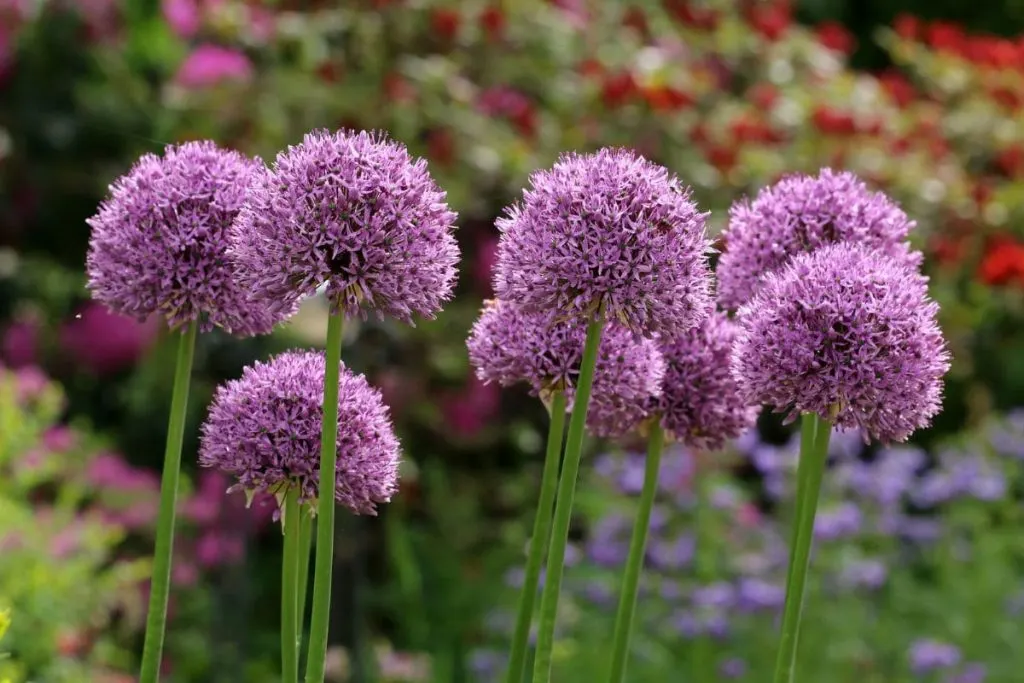
The beautiful purple bulb grows on an upright sturdy stem that can grow up to 50 inches tall. The flower head consists of tiny flowers in the shape of stars, and they are a well-known part of this ornamental plant.
The diameter of the flowers varies depending on the species. Although this plant is easy to grow in the garden, most people grow it indoors as an ornamental plant. When the leaves of the plant are crushed, they smell like onions.
- Botanic name: Allium sphaerocephalon
- Family: Allium
- Subfamily: Allioideae
- Flower color: purple
- Flower shape: round, oval
- Leaf shape: linear
- Sun conditions: full sun, partial shade
- Soil type: well-drained soil, clay soils
- Fertilizer: bone meal, bulb fertilizer, granular fertilizer
- Native habitat: Northern Hemisphere
9. Dahlia Tubers
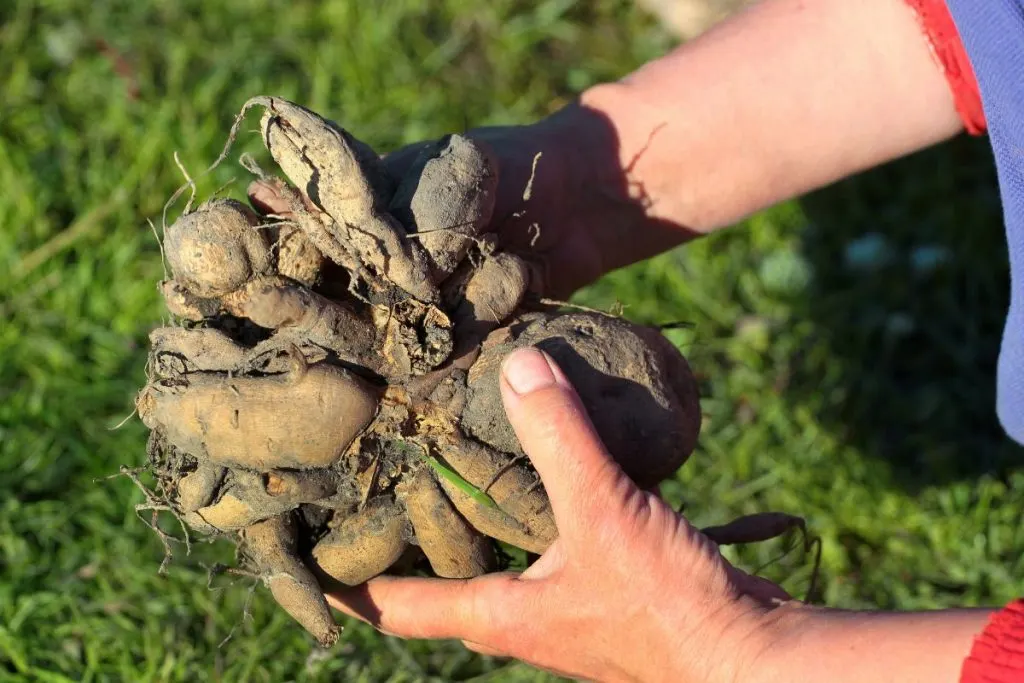
Dahlia decorates our gardens with its flowering from the end of summer until the first autumn frost. Their tuberous roots are sensitive to frost, so we plant them when that danger has passed, which is usually from the end of March to the middle of April.
If you’re not sure how to do proper wintering time for these plants, make sure you learn that by heart. They often die over the winter, so we bring you some tips on how to tell if dahlia tubers are dead. They belong to the imbricate bulbs group.
- Botanic name: Dahlia Cav.
- Family: Coreopsideae
- Subfamily: Asteroidea
- Flower color: white, red, yellow, pink
- Flower shape: ball-shape
- Leaf shape: oval-shaped
- Sun conditions: bright indirect light
- Soil type: well-draining perlite soil
- Fertilizer: phosphorus fertilizers
- Native habitat: Mexico and Central America
Do you know what is the national flower of Mexico?
FAQs

Below we bring you the most popular FAQs about bulb flower types. We hope you’ll learn something new in this section below as well.
Are There Spring Bulbs And Winter Bulbs?
There is so such a thing as winter bulbs. Spring bulbs are the flower bulb types that are planted in early or late springtime, but winter bulbs are simply stored during the winter since they can’t stand cold temperatures.
What Bulbs Flower Every Year?
Are Bulbs Perennials?
What Are Plants From Bulbs Called?
Can Many Bulbs Grow In One Hole?
Bulbs grow quickly and need a lot of nutrients to thrive, so we do not recommend planting more than one bulb in one hole. Space them at least a few inches apart.
How Deep Do You Bury Bulbs?
This depends on the type of flower bulb you have. True bulbs can be right under the soil surface while imbricate bulbs should be planted at least 9 inches under the soil surface.
What Are Summer Bulbs?
Final Thought

Something tells me you feel differently about these flowers now. I am almost 100% sure that you want them in your garden or house now.
This is quite expected considering that we have presented you with 9 beautiful bulb flower types.
What you should pay attention to when planting are the types of bulb plants. Are they true bulbs or imbricate bulbs, because the depth and position of a planting depend on the type.
Good luck with planting flower bulbs, see you soon with similar topics!
